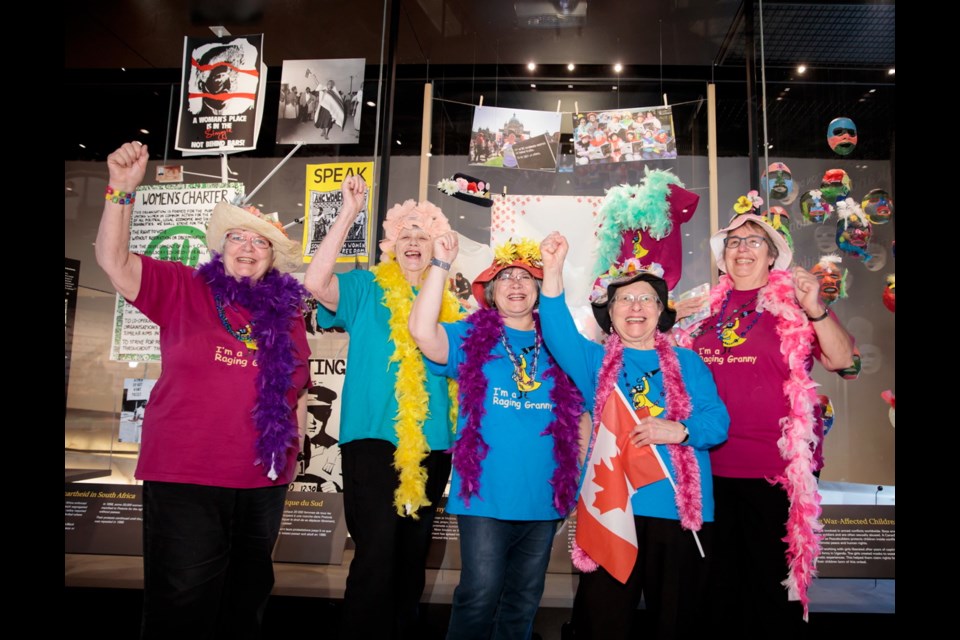Their extravagant costumes made the Raging Grannies easy to spot during a recent visit to the Canadian Museum for Human Rights, where an exhibit honouring their social activism was opened.
“They were leaving trails of feathers all through the museum with their boas,” laughed exhibit curator Julia Peristerakis.
The Victoria group, which is marking its 30th anniversary this year and has spawned many other “gaggles” around the world, more than earned a spot in the Winnipeg museum’s Inspiring Change Gallery, she said.
The display the Raging Grannies are part of features “the different and unique ways that people can take action for human rights,” Peristerakis said.
With 2017 being Canada’s 150th anniversary, the search was on for good Canadian examples of that, she said.
“Of course, if you’re looking at exciting, unique ways of activism, the Raging Grannies come up quite quickly,” Peristerakis said. “We’ve been hoping to do an exhibit with them for a couple of years now, and the timing seemed right with their 30th anniversary, which is an incredibly long time for one group to be in action.
“We reached out, and they were excited to be considered for this exhibit.”
The Victoria “gaggle” ranges in age from 60s to early 90s. Freda Knott, 81 and a 23-year member of the group, said she already had a track record of fighting for peace and social causes when she decided to join.
She realized being a Granny would let her have fun while demonstrating for what she believed in. Singing is often how they communicate with the public, Knott said.
“And the message is to make a better world for all grandchildren.”
Granny Alison Acker is the main songwriter, Knott said.
While not everyone likes the group and its opinions, she said she is happy that the Grannies seem to strike a chord with youth.
“We do have lots of young people who say: ‘I want to be a Raging Granny when I grow up.’”
Knott said the 14-member group meets every Thursday afternoon and has good discussions.
“I will say we’re all very strong women; we have to put up with each other,” she said.
Peristerakis said she likes how the Grannies choose important, pressing issues and approach them with a light-hearted demeanour.
“So humour and satire, not taking themselves too seriously,” she said. “They said that humour is what keeps them going, being able to laugh so you don’t cry.”
The Grannies were a “delight” during their museum appearance, Peristerakis said.
“They kept us all laughing the whole time.”
Knott said being at the museum for the exhibit opening meant a lot to the group.
“I was very honoured that they would ask us to be part of that because we are definitely a human-rights organization.”
Peristerakis said the Grannies’ exhibit will likely be in place for a couple of years.
She said there was a “plethora” of Grannies paraphernalia to choose from when putting it together.
“They showed me homemade banners and puppets that they had and buttons and beads.”
She said social activism doesn’t usually generate such a great collection of artifacts.
“It’s one of the harder things we have to find, but with the Grannies, it was almost too much to choose from.”
Peristerakis said she visited Victoria last year to consult with members about what the exhibit should entail.
“They said how important it was to have a song in there, because singing is so important and one of the actions they’re known for.”
With that, the museum took some existing footage of the group and set up a continuous loop on a projector that is activated by a motion sensor. The Grannies can be seen in various places around Victoria with a song playing in the background.
“It really brings life to it, I think,” Peristerakis said.



